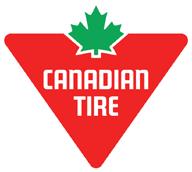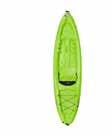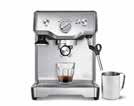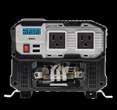














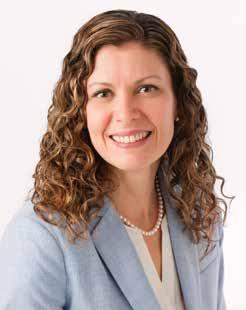
It’s such an exciting time to be part of the Tillsonburg District Memorial Hospital (TDMH) team and community as we celebrate 100 years of Caring for you, alongside the TDMH Volunteer Association. Since becoming the President & CEO just over three years ago, I’ve experienced dedication, compassion and the positive thinking showing TDMH’s commitment to our community.
Looking back on the humble roots of the hospital, born out of the bequest of former Mayor of Tillsonburg John Smith, through to our voluntary integration with Alexandra Hospital, Ingersoll (approved by the Ministry of Health this past December), TDMH has been an organization unafraid to move forward, committed to progress.
We can look to the Ed DeSutter Dialysis Unit in 2005 and the addition of the Lessif Orthopedic Unit in 2023 as examples of how the community support for TDMH has never wavered. The TDMH Foundation is
able to continue to provide funds for necessary capital equipment because of the great community support they receive on behalf of the hospital.
In the past year, TDMH has implemented the Rapid Access Fast Track (RAFT) program in the Emergency Department (ED) to improve the efficiency of patient care, and the eDash ED tracking system allowing patients in the ED to see wait times. This was part of a larger ED Optimization project, led by frontline leaders assisted by team members, physicians and patient advisors. TDMH has always been dedicated to our patients, providing the highest quality care. TDMH has regularly and voluntarily taken part in the Accreditation Canada surveys since 1968 and was the first small hospital in Canada to achieve the four-year Accreditation reward in 1994, the highest achievement awarded at the time. Accreditation has continued to be a success point for TDMH throughout the years, a chance to demonstrate and be surveyed on our commitment to continuous improvements in patient care.
The hospital would not function as effectively as it does without the loyalty and dedication of our volunteers. The members of the TDMH Volunteer Association are the faces that all of us see on a daily basis, portering patients, at the information desk, and in the gift shop and Coffee Corner. They perform vital functions in our organization and provide support to team members with encouraging words and sharing of smiles. The TDMH Volunteer Association has also raised funds to support so much of the equipment around the hospital, including being the main fundraiser for providing digital mammography


at TDMH.
We have volunteers as patient advisors, who are part of our Patient and Family Advisory Committee (PFAC) serving a valuable role of providing their insights into enhancing the patient experience in our projects and day-to-day operations.
We have volunteers that serve on our board of directors and our foundation board. These volunteers govern the hospital and provide strategic leadership based on their own skills, experience and knowledge. We would not be where we are today at TDMH, celebrating 100 years, without countless hours from these community members. Thank you for your commitment to TDMH.
In an article from 1972, G.W. Stevens, former TDMH Hospital Administrator said, “Hospitals have been described as “Where hearts, heads and hands are in the service of others.” I would say that the TDMH and the TDMH Volunteer Association are representative of this, without a doubt. I wanted to say a heartful thank you to all of our dedicated team members over the years. It has been my pleasure to lead TDMH through this significant milestone year and I look forward to seeing what the next 100 years brings, for the hospital, the volunteers and this great community.
Nadia
Facca
Integrated CEO/President AHI & TDMH (since 2022)

As current Chair of the Board of Directors, it’s my pleasure to take part in the 100th year celebrations of Tillsonburg District Memorial Hospital (TDMH) and the TDMH Volunteer Association.
100 years is something to be proud of. I may not have the ‘claim to fame’ of being the first baby born at TDMH, but I am happy to say I was born there. From the day the corner stone was laid to today, there have been so many changes, not just to our beautiful building, but also to our name, our technology and the advances in medical care.
Speaking of name, I think it is very fitting that during this celebration we are also working towards our integration with our partner, Alexandra Hospital, Ingersoll into Rural Roads
Health Services. From our earliest day as Soldiers Memorial Hospital, moving forward has always been a focus of our great hospital.
Former Mayor John Smith would be so proud of what TDMH has become. From his initial bequest of the funds to construct our hospital in 1925, imagine if he could see TDMH now? He would be impressed by the continuous improvements in patient care and safety, the great community support that has allows the TDMH Foundation to provide much needed support, and our leadership team that works tirelessly to ensure our level of care is top notch.
In my time on the board, we’ve seen so much progress toward the future –a new CT scanner, implementation of the Rapid Access Fast Track (RAFT) in the emergency department and the orthopaedic program – as well as continuing our journey toward integration. It’s important as we move forward to remember our roots by taking time to celebrate our history.
I see a bright future for our small rural hospital due to the continuous efforts of our dedicated team members, our community that have shown their pride, and our patients that have chosen us to take care of them in their time of need.
Congratulations TDMH on 100 years of excellent care in our community. Cheers for another 100 years ahead.
Carrie Lewis Chair, TDMH Board of Directors (2024 – current)
JOE MATISZ
TDMH Volunteer Association President
Congratulations to all volunteers on reaching our 100th anniversary for the Tillsonburg District Memorial Hospital (TDMH) Volunteer Association. We have many accomplishments to celebrate over the past 100 years supporting the hospital, patients, and the community of Tillsonburg.
On August 14, 1925, in the first year of the Tillsonburg Soldiers Memorial Hospital’s existence, the first planning meeting occurred to discuss the potential for a “Ladies’ Auxiliary” type of organization to support the new hospital. Across the country, Ladies’ Auxiliaries emerged during the First World War when women were asked to help wounded veterans returning home, and to provide supports for their families. Often anchored in hospitals, women came together to continue the tradition of volunteering to support the needs of ex-service personnel during this time.
On August 21, 1925, the first meeting of this new volunteer organization took place with Mrs. Ethel Lancaster being elected the first president, a position which she held for two years, and Mrs. V.A. Sinclair, (who was largely responsible for the initial planning) named honorary president. The organization was in fact called the “Ladies Aid” until after the Second World War, when the name was officially changed to “The Auxiliary to Tillsonburg Soldiers Memorial Hospital” by Mrs. H.J. Alexander in 1947. Much of this early history was documented in an undated article in the Tillsonburg News, written by Mrs. Sarah Stanfield, president of the Auxiliary from 1953 to 1954.
The name of our organization changed again on October 13, 1976, when new Letters of Patent were granted to the Auxiliary to the Tillsonburg District Memorial Hospital. This name was changed again to the Tillsonburg District Memorial Hospital Volunteer Association at the annual general meeting of the Volunteer Association on May 3, 2005. This last change signalled a shift from a focus on good deeds to volunteering across all areas within the hospital. This was also when we saw many more men volunteering at the hospital.
Over the past 100 years, we have had a total of 35 presidents.
The role of the TDMH Volunteer Association has evolved over the years. In the early days, the Ladies Aid organized to supply the various linens, and mending them when required. Providing good deeds, friendship and company was a
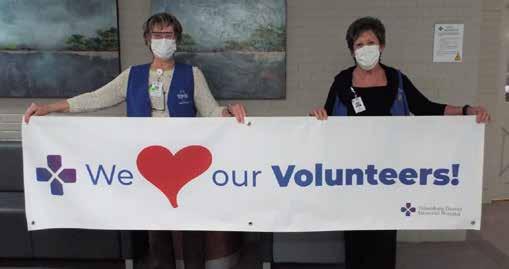
key volunteering role in the early years. Over time, volunteering has evolved and our volunteers are now involved in many important areas of hospital operations, including patient portering, information desk, volunteer visiting, patient feeding in the inpatient areas, supporting patients in mammography and diagnostic care, Coffee Corner, gift shop, cataracts and endoscopic movement of patients, and helping with administrative roles like reminder phone calls, and restocking supplies.
We are fortunate to have young people interested in volunteering with us. In the early days, they were called “Candy Stripers”, and their job was delivering snacks to patients in the hospital amongst other tasks. Since 1987, we have referred to our high school age volunteers as “Volunteens”. For interested teens, the volunteer hours at the hospital help Volunteens achieve the mandatory volunteer hours required for high school graduation.
Over time, the volunteer association has taken on a key role in fundraising for the hospital. The funds raised only started to be accounted for in 1953. Before 1953, the Ladies Aid and the Auxiliary simply made or bought things for the hospital as needed, without always formally recording their good deeds or monies raised. Rose Tag Days and Marathon Dessert bridge fundraisers are a couple of examples of early fundraising efforts coordinated through the Auxiliary.
Over the years, fundraising by the Auxiliary was substantial enough to purchase important equipment for the hospital. The first piece required to be given to the hospital by the Auxiliary was an operating room table to be used in the delivery room in 1951. Then an x-ray machine was needed, so $15,000 was pledged to this project with final payment made in 1951. The Auxiliary purchased furnishings for nurses and housekeeping staff rooms in
1952. In 1994, the first mammography unit was purchased and $100,000 was contributed by the Auxiliary. Other equipment purchased with the help of the Auxiliary funds include pediatric strollers, portable defibrillator monitor, bath lifts, ultrasonic units, and many other pieces of needed equipment.
Since 1953, it is estimated that the Volunteer Association has raised and given the hospital approximately $2.5 million for the purchase of equipment. Fundraising methods have been varied over the years, including the 1967 Auxiliary cookbooks (raising $5,000), a silent auction in 2011 (raising $982), and Nevada “HELLP” tickets, sold between 1990 and 2023 raising over ($14,000), to name a few.
One of the most memorable fundraisers was the “Extravaganza”. Extravaganza started in 1976, taking place in the main foyer of the Tillsonburg Complex also known as the Community Centre. It was an all-day event with door prizes, dinner and a beer garden. The Extravaganza moved to the former The Ontario Flue-Cured Tobacco Growers’ Auction Exchange after that building was purchased by the Town of Tillsonburg. It remained there until the building was sold to a private company. The Extravaganza was held yearly from 1976 until 2011, raising a total of $757,000 over the 37 years. It required dedicated convenors and volunteers to make it happen. It took close to 300 volunteers to collect, sort and present the items for the Extravaganza. When the Extravaganza years came to an end, the Volunteer Association coordinated several other large-scale fundraisers, including the Temptations Dinner and Silent Auction (three of these), Tillsonburg Custom Foods chicken breast sales, LCBO coin box program, yard sale and the Autoneum employee barbeque. These fundraisers collectively raised over
$100,000 over five years.
The main TDMH Volunteer Association fundraising programs today are the gift shop, coffee corner and 50/50 tickets. The gift shop originated as a counter in the main waiting room and through the years has developed into the shop we have today. The Coffee Corner has been around for over 26 years. The 50/50 tickets are sold in conjunction with the TDMH Foundation. The TDMH Foundation started December 24, 1982. The TDMH Foundation is a registered charity where fundraised dollars and donations for the hospital are housed. Up until the formation of the TDMH Foundation, the Volunteer Association was one of the major fundraisers for the hospital. Today the Volunteer Association works collaboratively with the TDMH Foundation to raise funds for the hospital.
In addition to fundraising and volunteering, the TDMH Volunteer Association promotes health care education by providing student scholarships. The first scholarship was given to Edith Powers in 1956 for $100. Today, the TDMH Volunteer Association provides two annual scholarships every year to students attending college or university in a health care field. The annual scholarship is worth up to $2,000 over two years. This year, there was only one qualified recipient for the scholarship - Kaydee Arquisola, who is working to become a Registered Practical Nurse.
Just like the rest of the world, the COVID-19 Pandemic impacted the TDMH Volunteer Association in March 2020. The hospital was mandated to restrict people entering the hospital to only essential employees, and the Association was required to suspend all volunteering. As the pandemic lifted, volunteers were permitted to slowly return to the hospital. By June 2022, volunteer programs had restarted, but Covid had certainly taken a toll, with the number of volunteers willing and able to help dropping from 200 volunteers prior to COVID, to just over 100 today.
The good news is we are on track for a good overall year of volunteer hours. In November 2024, we hit 8,300 hours compares to 7,825 hours the previous year. We hope to reach 13,000 hours by the end of the fiscal year, which is approaching our pre-COVID level of 18,000 hours a year.
I would like to thank all of our great TDMH Volunteers and Volunteens for their continued support of the TDMH Volunteer Association. I trust we will be around for many years to come.
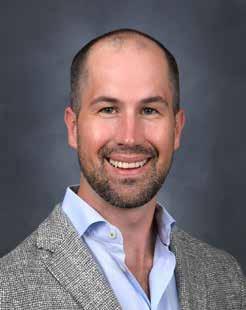
DR. CLAYTON INCULET Chief of Staff, TDMH
Congratulations Tillsonburg District Memorial Hospital on100 remarkable years of compassionate care, service, and community commitment. As Chief of Staff, it is a privilege to share such a momentous celebration.
For a century, TDMH has stood as a cornerstone of healthcare in Tillsonburg and the surrounding area—providing not only medical excellence, but also a sense of trust and belonging to the people we serve. This centennial milestone is a testament to the dedication of our staff, physicians, volunteers and the community
who have always supported the heart of the hospital.
Volunteers have played an essential role throughout TDMH’s history, offering their time, energy, and kindness to patients and families in countless ways. Whether it’s through comforting a patient, helping a visitor navigate the hospital to the orthopaedic clinic, or supporting day-to-day operations, their contributions leave a lasting impact. Their presence reminds us that healthcare is about people first—and that healing happens not only through medicine, but through human connection.
In my own clinic, I’ve seen the impact our volunteers make towards a meaningful difference each day. They allow us to focus more time on patient care, and their positivity helps create a welcoming environment for all who walk through our doors.
On behalf of the medical staff, I offer heartfelt congratulations to TDMH on 100 years of exceptional service. May we continue to build on this legacy together—with compassion, innovation, and the same strong spirit of community that has brought us this far.
Here’s to the next 100 years!
Dr. Clayton Inculet Chief of Staff, TDMH

DIANE KLEER Chair, TDMH Board of Directors, 2022-2024
As past chair of Tillsonburg District Memorial Hospital (TDMH), it is my great pleasure and honour to have this opportunity to commemorate 100 years of dedication and compassionate care to our community.
A few milestones during my twoyear term as chair was TDMH receiving the final award of Accredited with Commendation in January 2023. This award means that an organization has surpassed the fun-
damental requirements of the Accreditation program. Kudos to all the TDMH staff for receiving this honor.
With the financial assistance of the TDMH Foundation, the board approved the advancement to the next phase of our electronic health record, Cerner One Chart Phase II, Wave 1. This expansion allows us to be in lock step with other partnering hospitals in Southwestern Ontario as they too expand their electronic health record.
After many years of a strong partnership, and a year of intentional planning and engagement with staff, physicians, patients, partners, volunteers, and the community, the TDMH and AHI Board of Directors voted for a full integration in May 2024. Stronger Together, the two hospitals continue to work toward the end goal of integration by April 2026.
Congratulations and thank you to the incredible team at TDMH for providing the highest quality healthcare in our community.
Diane Kleer Chair, TDMH Board of Directors, 2022-2024

Celebrating 100 years is an amazing milestone. Times have
changed with care practices, but the ongoing dedication of our staff has been the glue to the success of Tillsonburg District Memorial Hospital (TDMH).
I was honoured to see firsthand some of the great successes through my 10 years on the Board of Directors.
In 2020, the COVID-19 pandemic caused us all to pause, and we learned to do things differently. Even through personal and workplace turmoil, our staff remained focused on providing the best quality and safest care to our patients.
Along with Alexandra Hospital, Ingersoll, we were the first hospitals in the region to implement electronic inpatient nursing doc-
umentation. This initiative was the groundwork for the ability to share appropriate information within the health care system.
Over the years many physicians have graced TDMH with their knowledge and unwavering dedication to those requiring hospital services. In 2021, we welcomed Dr. Clayton Inculet bringing orthopaedic surgery expertise allowing TDMH to provide same day joint replacement surgery for hips and knees for qualifying patients.
TDMH has both grown and changed over the last 100 years. Some of the services once provided have moved away however the evolution of new procedures and health care delivery methods have
grown within our walls.
Sincere thanks to all who have been a part of TDMH since the doors first opened until today. Best wishes for the future of Tillsonburg District Memorial Hospital.
Ruby Withington was the Chair, TDMH Board of Directors, from 2020-2022.

















As I reflect on my time as past Tillsonburg District Memorial Hospital (TDMH) Board Chair, I can’t help but feel tremendously proud of the exceptional people with extraordinary hearts who “gave their all” to achieving the utmost efficiency to the growth and expansion of the hospital. Our TDMH Family all played their part in our continuation of meeting the excellent standards of Accreditation Ontario.
Although our hospital may be small, it is vital to this area as our designated catchment population far exceeds our government guidelines.
Our progress in attracting specialists and physicians for our E.D. and inpatient care with our state-of-the-art equipment continues to grow and expand to this day.
Our Board of Directors shared a common thread of humility by the compassion and generosity from our community. We are so fortunate to have numerous and continuous contributions from our many donors that have ensured the growth and


progress of our hospital. The people of this great community never cease to amaze me!
Working together with innovative and dedicated people who shared a common goal to build a future for our hospital, for our community, has been one of the most gratifying experiences of my life.
Thank you to the wonderful people of Tillsonburg and TDMH for this incredible opportunity!
Continued success to TDMH.
Larry Phillips was Chair, TDMH Board of Directors, 2014-2016 and Chair, TDMH Foundation Board of Directors, 2019-2021.
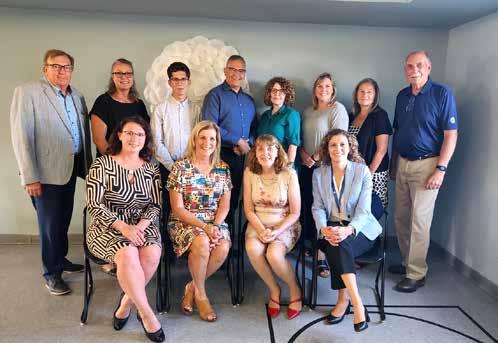

In September 2017, I had the absolute honour of being appointed President and CEO of TDMH and AHI and so began my adventure leading these two phenomenal healthcare organizations.
I recall on day one of my tenure, meeting with Accreditation Canada as the hospital was undergoing this intensive survey process. The team,
as always, knocked it out of the park and were awarded Accreditation with Exemplary Standing. That would be the first of two surveys during my tenure that the hospitals would be awarded this highest level of recognition.
Through the unwavering support of our Board of Directors and our Foundation we were able to accomplish so much in the early days introducing cutting edge technology to support patient care, introducing a new physician model leveraging hospitalists and of course, embarking on our journey to full health system integration launching the Oxford and Area Ontario Health Team.
Little did we know in late 2019 that the COVID-19 pandemic was on our doorstep, an event that would change our hospital and our world forever. As I reflect on those tumultuous months, I am struck by the courage and resilience of our staff, physicians and leadership team, the lessons learned, and the profound impact on our community. From the very beginning, the weight of
responsibility was immense. We were tasked with keeping our staff and patients safe while navigating rapidly changing guidelines, supply shortages, and the emotional toll of an unprecedented crisis. There were days when the challenges felt insurmountable. Yet, time and time again, our team and our community rallied to support this incredible hospital. I recall one particularly difficult day being met by signs of support decorating our grounds – placed there by our community. Our gardens were decorated with hand-painted inspirational rocks; businesses and individuals in our community came together with donations of food, handmade masks, 3D printed ear-saving mask clips, hand sanitizer and absolutely anything else we needed for our staff. I recall our Mayor checking in on a weekly basis to ask how the town can support the hospital. I will be forever grateful for these expressions of support and caring for our team.
Of course, despite the pressure of the pandemic and the toll it was
taking on our leaders and teams, the leadership team never stopped building and expanding the care provided to the Tillsonburg Community, introducing a new orthopedic surgical program providing the newest state of the art surgical care close to home.
I remain so incredibly grateful for my time at TDMH and for being a small part of the last 100 years of caring. The experience shaped me as a leader and as a person. I learned that while we cannot predict every challenge, we can prepare by building strong systems, fostering collaboration, and prioritizing the well-being of our people. It also reaffirmed my belief in the power of collective resilience and the profound difference we can make, even in the face of the unimaginable. Together with the Tillsonburg community, we proved that compassion and determination are the heartbeats of healthcare.
Happy 100th anniversary TDMH!
Sandy Jansen
AHI-TDMH Integrated President & CEO, 2017-2022
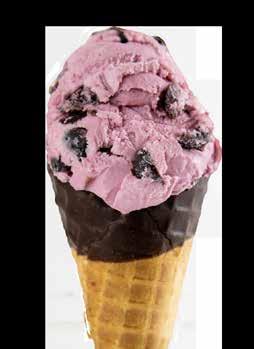

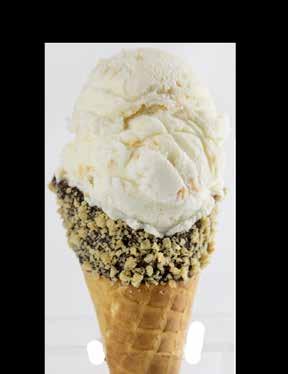
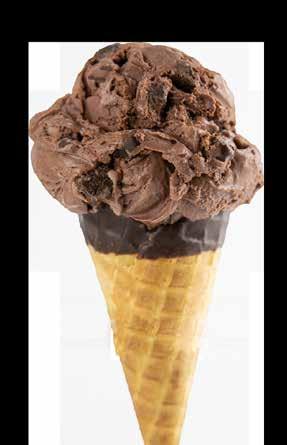





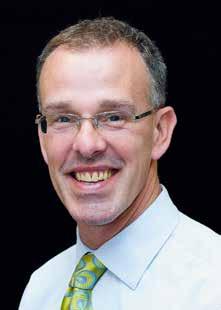
I was President and Chief Executive Officer of Tillsonburg District Memorial Hospital (TDMH) from 2004-2012. It was my first experi-
ence as a CEO and I was so fortunate to inherit all of the strong work of those leaders before me. The Board of Directors, under the tutelage of Peg Hogarth, punched above its weight. And the staff, medical staff and community were so competent, proud and supportive of our hospital. We moved our young family to a house on Demeyere Avenue where we built a strong community with whom we are still in touch. It was a homecoming for me; I was born and raised in Ingersoll and my family had strong ties to Tillsonburg.
My objective was to build on TDMH’s strengths and ensure we were part of the integrated system of hospital care that was emerging in Southwestern Ontario. During my time at TDMH we introduced a satellite dialysis unit in partnership with London Health Sciences Centre. In partnership with Alexandra Hospital,
Ingersoll, we were able to implement and operate only the second CT scanner in a hospital of our size in Ontario. We worked closely with other hospitals on laboratory services and a shared surgical call schedule with Woodstock General Hospital. The highlight for me was becoming the CEO of both TDMH and the Alexandra Hospital, Ingersoll, a partnership that is still flourishing.
The community’s vision and support were the secret sauce for all these advances. The Town of Tillsonburg always had confidence in its future and realized that a strong hospital was critical to its continued success. We loved our time in Tillsonburg. Our daughters are all grown now and we all have happy memories of Tillsonburg.
Tom McHugh was TDMH President & CEO 2004 – 2012, and Integrated President & CEO 2012.
From all of us to TMDH
Thank you for 100 years of making a difference.
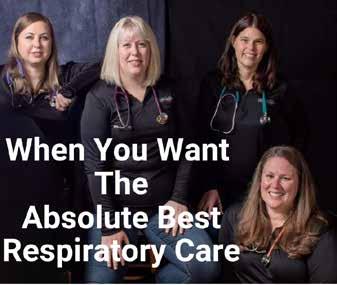


Congratulations to Tillsonburg District Memorial Hospital (TDMH) on the celebration of its Centennial in 2025!
From 2002 to 2014 I was a member of the TDMH Board of Directors, and from 2008 to 2010 was honored to serve as the board’s chair.
There were many events that took place at TDMH while I served as the board’s chair that were especially memorable. For example, through collaboration with the TDMH Foundation that started in 2009, the foundation hired its first Executive Director in January of 2010. This development led to an immediate, and significant, increase in donations to the foundation that has continued to date.
After a significant period of ever-increasing effort, we were also able to finally secure, and then celebrate on Oct. 9, 2009, the grand opening of TDMH's first CT scanner. This represented a major advance in the diagnostic abilities available to our health care providers at TDMH and the community that they serve.
Finally, through extensive consultation over an extensive period of time both within our own ranks and with Alexandra Hospital in Ingersoll, we were able to
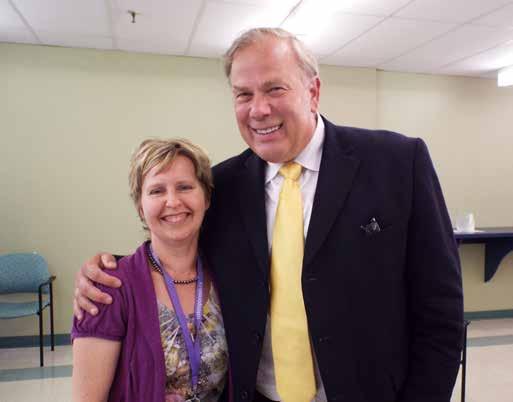
merge the two hospitals at the President - CEO level. That merger immediately saved very significant resources for both hospitals and helped to pave the way for further integration and cost saving efforts that continue to this day.
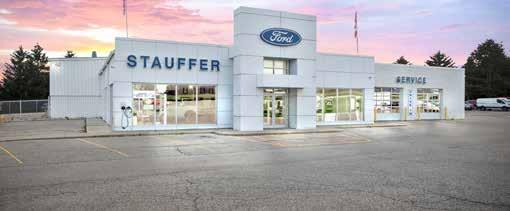







As the saying goes, "it takes a village," and none of the foregoing achievements would have been possible without the talent and dedication of the professionals and volunteers that TDMH has had, and continues to attract.
We have had at all times an excellent Board of Directors where ideas could be discussed, and debated, in a fulsome and very productive manner. The acquisition of the CT scanner, and then the affiliation that was finally established with Alexandra Hospital are two excellent examples of just how collaboratively our board was able to function in this regard.
Tom McHugh in his capacity as TDMH's President and CEO was especially helpful in this regard during my term as board chair. His innovative and "forward thinking" style benefited TDMH and the patients that it served then, and still to this day.
Finally, TDMH's support staff were, and still are, extremely capable and supportive. In this regard Loralee Heemskerk, whose official title was "Executive Assistant", deserves special recognition for helping to ensure that our organization and all of its board members over the years were as fully informed and organized as any volunteer board possibly could be.
It was a privilege to work with such a dedicated team and, again, congratulations to TDMH on the celebration of its centennial in 2025!
Brad Bennett was Chair, TDMH Board of Directors from 2008-2010.


A special thank you goes out to Lisa Dahm, Integrated Executive Assistant, Administration & Governance, for her assistance in making this special edition
come together. Besides writing some of the articles, Lisa coordinated lining up the messages from the contributors and found the historic photos in the hospital archives.
EUGENE
HEATH Chair, TDMH Board of Directors, from 2000-2002
Coming from the business world, it took some time to get used to how things work in the health care world. I was always impressed by the teamwork at all levels of the Tillsonburg District Memorial Hospital (TDMH) staff. By the time I became Chair of the Board I was honoured to be able to contribute in any way I could to help keep things running smoothly and moving forward.
Jim Spencer had just retired as CEO after having done a stellar job and he had set a well-respected high bar. Brenda Butters was promoted
from our staff to be the new CEO and made a seamless transition.
We had just come through the Y2K scare when we, and most of the computerized world, feared bad things could happen if computers couldn’t handle the transition from 1999 to 2000. The office staff made all the necessary contingency plans and there was a big sigh of relief when nothing happened.
TDMH has been a pillar of Tillsonburg and our district. It is greatly appreciated, generously supported by many and well suited to carry on.
Eugene Heath was the Chair, TDMH Board of Directors, from 2000-2002.
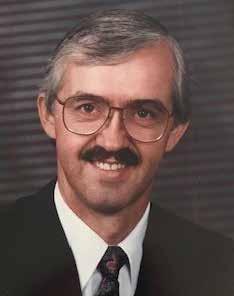
DAVID CORNER
Chair, TDMH Board of Directors 1985-1987
Chair, TDMH Foundation Board of Directors, 1995-1999
Tillsonburg District Memorial Hospital (TDMH) has been the epitome of change over the 30 years that I have volunteered on the hospital and Foundation Boards of Directors.
In the 1980's providing guidance to the hospital was an 18-member Board of Directors with representation from across the catchment area.



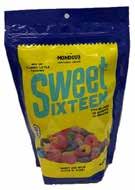
TDMH had 140 plus acute beds including a very active maternity ward and a full long term care ward.
From the purchase of the first personal computer ($15,000) to the newest CT scanner, technological upgrades have been continuous.
Now we have a 50-bed acute care facility with several outpatient clinics providing service to a growing and changing demographic.
The TDMH Foundation has grown from a passive fundraiser that commenced with an art auction in the early 80's to the proactive organization it is today supporting capital equipment and special project funding for TDMH.
Keeping quality healthcare close to home will continue to be a priority for TDMH as they journey forward to further integration with AHI and plan for the next 100 years.
It has been an honour and privilege to have served TDMH.
Respectfully Submitted
David Corner
Chair, TDMH Board of Directors 1985-1987
Chair, TDMH Foundation Board of Directors, 1995-1999
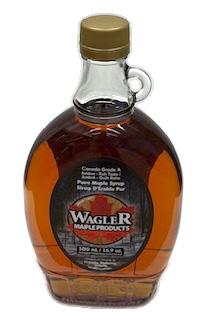




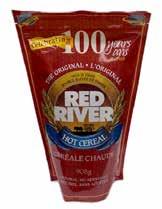
PEG HOGARTH Chair, TDMH Board of Directors 1987-1989
We are celebrating 100 years of TDMH’s caring and service to Tillsonburg and the surrounding area. We are honouring the past but at the same time looking forward to new possibilities in the future. I am so proud to have been involved for 25 of those years. Serving on its governing volunteer board for that period of time (1982-2007) gave me experience from the past that can often inform the future.
Much of that board’s time was spent assessing and attempting to meet the needs of the community such as: worrying about not having sufficient funding to ensure the sustainability of a healthcare system of which we were very proud; concerned about our aging infrastructure and developing plans for partial replacement; recruiting enough family physicians to meet medical needs of the community and the hospital; ensuring that our medical equipment was up to date and that we were equipped with the newest technology available to a hospital of our size; dwelling on the fact that patients had to wait too long in the ER; troubled that there were not enough long-term beds for our elderly popu-


Tillsonburg District Memorial Hospital’s legacy is written in every life it’s touched.
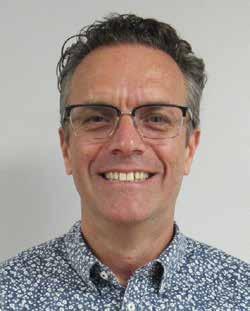
TDMH Chief of Staff, 2017 - 2022
Tillsonburg District Memorial Hospital's 100th year anniversary and the TDMH Volunteer Association's 100th year anniversary are momentous occasions worth cele-
brating. TDMH has been committed to providing top quality health care for a century, and the Volunteer Association has been supporting the hospital by assisting in patient care and also raising funds.
I started my family medicine practice in Tillsonburg in 1989 and have many fond memories of working with the wonderful people at TDMH. While serving as Chief of Staff from 2017 to 2022, I saw firsthand the important contribution of all the people that worked and volunteered at TDMH, including those who served on the Board of Directors. Everyone was committed to providing excellent service and patient care. Tillsonburg and area residents can be so proud of TDMH and the Volunteer Association.
Congratulations on reaching this milestone anniversary!
Jamie Cluett, TDMH Chief of Staff, 2017 - 2022





JEFF HELSDON Editor
As Tillsonburg District Memorial Hospital (TDMH) celebrates its 100th anniversary, there is a nod towards the next quarter century, and beyond.
Like many institutions, TDMH president and CEO Nadia Facca explained planning for the future is an ongoing exercise. However, with the hospital, there are a couple of differences. Technology has advanced in leaps and bounds, and with the technology being used to save lives, keeping up is vital. And, the hospital is different than other public institutions in how it receives funding for new equipment. Comparing it to a municipality, taxpayers fund upgrades through property taxes and user fees in a municipality, but with the hospital, the cost of all equipment must be fundraised by the community.
“It’s hard to believe we are publicly funded by
the Ministry of Health but have to depend on the community for equipment,” Facca said.
“I don’t think that will change into the future and we will continue to need to fundraise.”
As the hospital celebrates its 100th, Facca tipped her hat to the community for making this major milestone possible. She pointed to John Smith, the Tillsonburg citizen and former mayor, who bequeathed the land for the hospital in his will, and the effort of community members since that led to multiple building expansions and ongoing equipment updates.
“People saw a need and kept with; it is why are still here today,” she said. “That’s how you get to 100 years - the community wraps its arms around you and embraces you.”
Facca pointed to the second CT machine added at TDMH, possible through a generous donation from the Verspeeten family, as an example of the support.
“If we didn’t have that donation and the widespread community support, we may not have that latest technology,” she said.
The near future
Much has changed from the days when the hospital was built. In the 1920s, and many subsequent decades, X-rays were taken on film and had to be developed. That is all now captured digitally. Community acquired pneumonia, for instance, used to require a hospital stay to be cured and often resulted in death - until the 1930s when antibiotics were discovered. Now, this type of pneumonia can be treated by taking an antibiotic at home.
Laparoscopic surgery, which is done with cameras and robotics, allows surgeons to complete many procedures with smaller incisions and be less invasive, resulting in quicker healing and shorter hospital stays.
“The future of medicine will have more robotics, and artificial intelligence,” Facca said.

“AI will help us with diagnosing and treatment.”
TDMH was on the leading edge approximately 25 years ago when it partnered with London Health Sciences Centre, St. Joseph’s Health Care London, St. Thomas, Ingersoll, Woodstock and other area hospitals for electronic health records technology. For example, if a person with a heart attack was rushed to TDMH where preliminary tests were done,

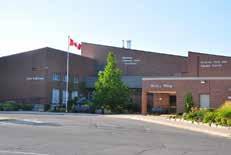
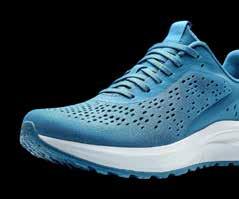
and the patient needed transfer to London, all patient records are shared between hospitals in protected electronic instances.
“The doctors there can see what the doctors did here,” Facca said. “Your file goes with you digitally.”
Now electronic health records are being expanded further, again with community support. TDMH is in the next phase of this expansion currently with other partnering hospitals.
Patients can also see their own results online through the Connect My Health patient portal. Registration is done through their website. This was made possible due to the many years that TDMH has continued to digitize the electronic health record.
“The future will hold more and more technology expansion,” Facca said.
For TDMH, part of the future will be the amalgamation with Ingersoll’s Alexandra Hospital to Rural Roads Health Services. The outside of both buildings will still have their individual names, along with the new integrated organizational name.
Facca said when people come to the front door, it will look the same. The next step after integration is long range clinical service planning. Facca sees this opening up more opportunities and will help to prepare local health care for population growth and demographic changes.
“With integration we can envision the future together to strengthen health care delivery,” she said.
Facca said clinical service planning is a long process – we are planning for 20 to 30 years ahead of now.
“It’s not easy, it’s long,” she explained. “We want to be in the conversation with the Ministry on our long range plans. We’re not there yet, but want to be there soon to realize long-term benefits.”
The end result of that conversation with the Ministry may or may not mean site expansion in Tillsonburg, it’s too early to know. The goal will be the appropriate level of service for the community for the future.
“When we are integrated and go to the Ministry with an integrated submission on our clinical services, we will be stronger.”
She emphasized, though, in the integration, that the identity of the individual hospitals will stay with each site.
“We’re not doing a shake-up, we’re on a journey together…it’s been an evolution,” Facca said.
That evolution will continue with looking for efficiencies in administration. For example, currently, there are two web sites, and in the future a move will be made towards one web site representing both sites and each of their services.
Work is currently underway with other partners across Oxford County to have Rural Roads Health Services be a site for physician clerkship in the future– the step for third and fourth year medical students before their residence is declared. Facca expects this could take a few years to establish.
“When you have medical students in the community and they fall in love with the community, they may decide to set up a practice,” she said. “Also, what it gives students is a taste of rural medicine.”

able technologies that will help us manage our health,” Facca pondered. “From a hospital perspective, how technology will change might allow us to care for patients better in the next 100 years.”
Facca said personalized medicine, which adapts the treatment to the individual’s genetic response, is one thing on the horizon. She said it is already occurring in some places.
She sees patients having more information at their fingertips and hopes for a focus on prevention of disease and early detection. If medical professionals know earlier in a patient’s life the possible ailments, such as a heart condition or cancer, they can advise how to better alter lifestyles for prevention. In contrast, Facca said medicine is more reactive now.
One of the common images of the future of technology is the tricorders and scanners used in science fiction series such as “Star Trek”. Is that next?
Currently, medical students in their first year visit Tillsonburg and Ingersoll as part of Discovery Week. The feedback from the students is the students didn’t realize what each of the hospitals has to offer.

“When they’re shadowing our doctors, they realize everything the community has to offer,” Facca said. What else does the future offer?
Where is medicine going in the future? Just a quarter of a century ago, no one would have imagined watches that can take a pulse, ECG or track respiratory rates. So, what could be next.
“We may see advancements in wear-
“It’s possible,” Facca said. “Anything is possible. It will happen quickly. The pace of technology will happen much quicker than anyone expects. I hope we’re ready for it.”
And it’s her goal to ensure the hospital is in a position for the future.

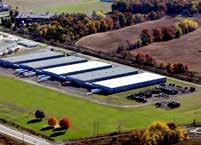






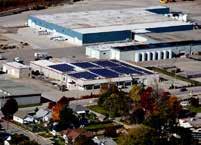

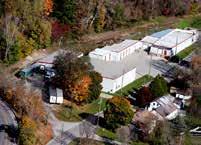

BARB MORGAN
Convenor of the TDMH Gift Shop
Volunteering at Tillsonburg District Memorial Hospital (TDMH) seem to be a natural evolution of my life. My parents always told me, whether it can be verified or not, that I was the first baby born in the new wing of the Tillsonburg Hospital .... which later I have amended to add “which is now the old wing.”
As a young child, I was brought up on Bear Street and then moved to 112 Rolph Street, just steps away from TDMH. We watched the ambulances race up the street. We watched our next-door neighbour Dr. Dalby running to the hospital at all hours of the day or night. So, the importance of our hospital was not lost on us, at even a very young age.
When we were about 6 or 7, we hosted a Kool-Aid stand in front of our home, and with the profits, a whopping 62 cents, we marched up to the front desk of TDMH and donated. I don’t know who accepted our donation, but I remember being praised and feeling all warm and fuzzy about it.
But the best part was when the local paper came out that week, myself and all my cohorts had our names in the paper for our generous donation. Wow, talk about an impression! Those kinds of things really do
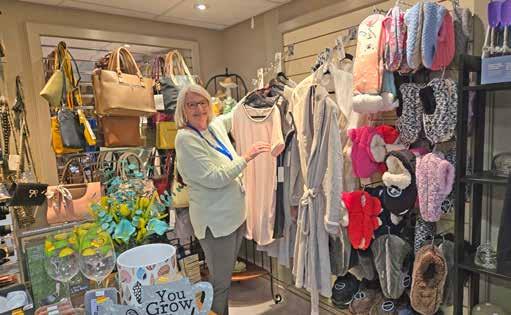
stick with people.
After my dad passed away, my mother would go to the hospital every Thursday afternoon to work in the Gift Shop. I remember her tales of trying to balance the till and of all her big sales that day. She could give me lessons on balancing...
When I started my Real Estate Career, I quickly realized that the Tillsonburg Hospital was something we bragged about to all potential buyers from out of town. On
Tillsonburg District Memorial Hospital and Volunteer Foundation on a century of care! peopleCare looks forward to continued partnership with you to meet the needs of the community.
every tour of what Tillsonburg had to offer, the drive by of our hospital was a highlight of the tour. Something that had always just been there had turned into something that we were very lucky to have and something we needed to support.
In 2016, I was asked to join the Board of Directors of the hospital, and it was an honour to sit around that table for 6 years. That too was an incredible learning experience for me. Again, it was driven home
exactly how fortunate we are in this world to have this hospital in the centre of our town.
So, last year when I decided that this was to be my last year in Real Estate, I needed something to help me transition. My first and only thought was “I am going to volunteer at the Hospital.” I reached out to Stacia Hansen (TDMH Volunteer Coordinator). Together, with my friend Barb Van Doninck, we have taken on the job of Convenors of the Gift Shop and yes, it did take two of us to fill Joyce’s shoes!
I am very proud to say that my daughter is also a volunteer at this hospital as a member of the TDMH Foundation Board and so the family tradition continues.
I will finish by saying that volunteering at the hospital is a privilege and an honour. To be included and encouraged by a group of like-minded individuals as yourselves is heart warming.
Thank you for allowing me this privilege and for helping me learn to support this hospital and the doctors, nurses and everyone who keeps the doors open.
Congratulations on 100 years, and Cheers to the next 100 years of volunteering!
Barb Morgan was a member of TDMH Board of Directors from 2016 – 2022, and is the current convenor of the TDMH Gift Shop
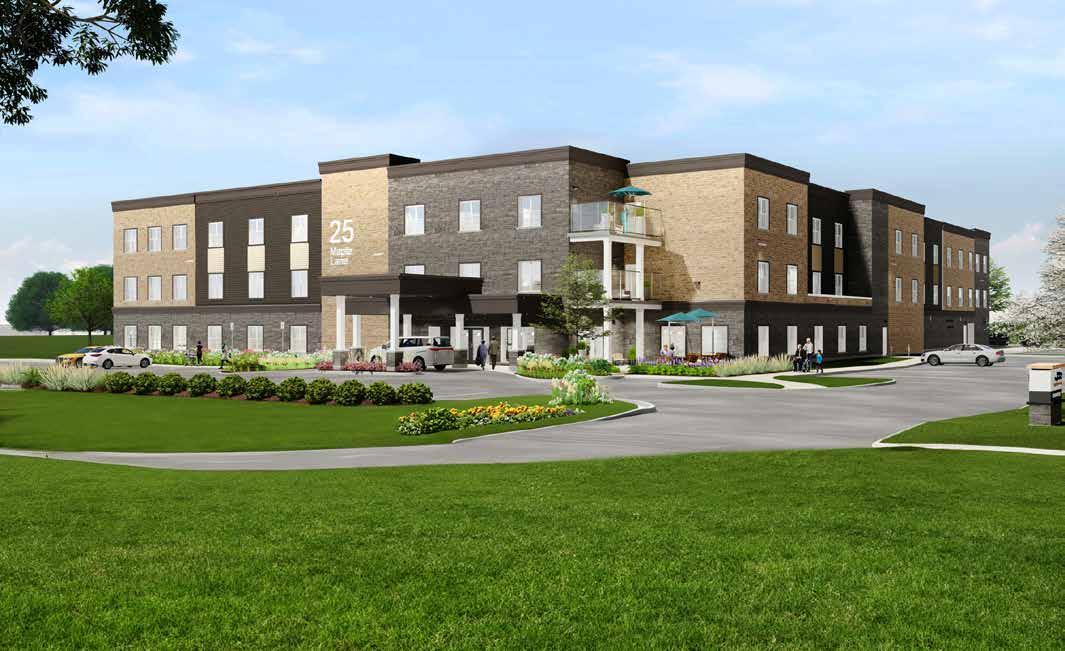



tient care areas, learning as I was going along.
Hi everyone, I am going down memory lane, to share some of my experiences working as a Registered Nurse (RN) at Tillsonburg District Memorial Hospital (TDMH.) I started working there in October 1988 and retired in March 2013.
The first person that greeted me on orientation day was Marion Pratt, who was the in-service educator, staff development, at the hospital at that time. She was the best of the best, and made me feel very warm and welcome, as a newcomer, and that got me off to a great start. I trained at Toronto General Hospital and worked in neuro surgery for eight years, then moved to the Queensway Hospital in Etobicoke as a float nurse for nine years.
At TDMH, I was first hired parttime and worked in most of the pa-
My sister Sue Bamford, RN, and Ellen Baird, RN, oriented me to help out in the post op recovery room as needed.
When I got oriented to the Intensive Cardiac Care Unit (ICCU), I can thank Debi Drinkwater RN, Shirley Thiebert RN, and Diane Monk RN for making me feel very welcome, and I learned a lot from those great nurses. Shirley Thiebert said to me, “Don’t worry, this is a very nice place to work.” And she was right!
I did many ambulance runs to London with critical patients, and like the TDMH staff, the ambulance crew helped me along and treated me very well.
In 1996, I got a full-time job in the ICCU, which was always my favourite place to work. The ICCU staff did off-hour courses in cardiac and respiratory care and by increasing
your knowledge base helped to give more accurate reporting to the doctors on patient status.
We were also very fortunate to have two wonderful and knowledgeable respiratory therapists (RTs) helping us in the unit. Those people were Les Molnar and Derek Barnard, who helped us with ventilated patients and much more.
Marion Pratt, my nurse educator, always kept her office door open for anyone who needed a good listener to drop in during the day for a kind, helpful talk.
I became a committee member for Health & Safety. Each area was routinely inspected for hazards and reported to area leaders. This was a good way to get to know the hospital.
My time working at TDMH leaves me with fond memories of the great people that I met and worked with including Janis Barnard RN and Marlene Thorpe RN who were both
nursing co-ordinators of ICCU at different times, both sharing advice and directions.
It has been a privilege to work and share in the care of patients in our wonderful community during my time at TDMH.
Leslie Wilcox
Registered Nurse at TDMH (1988 – 2013)
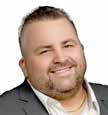






















Over the course of the last 100 years, Tillsonburg District Memorial Hospital (TDMH) and the TDMH Volunteer Association have been through a lot - transitions, changes and a great many successes. As we celebrate 100 years of caring for you, let’s take a look back as we journey through some of the major milestones that brought the hospital and volunteer association where we are today.
The death of John Smith, former mayor of Tillsonburg, who, after providing for his widow, left between $10,000 - $19,000 to the town, with direction that it is to be used to form a hospital trust in the Town of Tillsonburg. Smith also left his home on the west side of Rolph Street at the corner of Washington Grand for
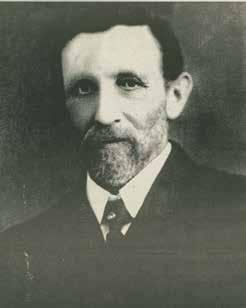
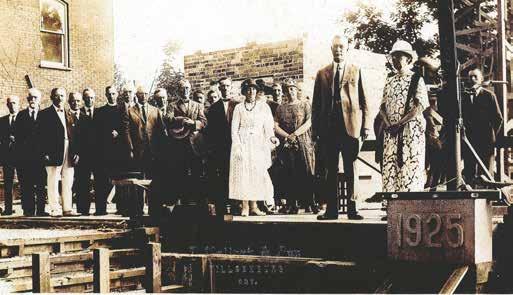
use as that hospital, with the caveat that if it wasn’t appropriate, it was to be sold and more appropriate land should be purchased.
Letters patent show that Tillsonburg Soldier’s Memorial Hospital Trust was established in order to create Soldiers Memorial Hospital.
The Smith house was sold for $4,500, and the Ferguson property located at Rolph and Bear Streets was purchased for $7,000. The town closed off the west end of Bear Street, between Rolph Street and Jack Alley (now called Valley View) and sold it to the hospital trust for $1 plus legal costs connected to the sale.
Cornerstone was laid for the new building, attached to the Ferguson house, which would be built of brick


and joist construction with hardwood floor,s for a cost of $60,000 plus equipment. The silver trowel used in the ceremony is on display in the glass display case at the main entrance of TDMH.
The group who would become the “Ladies Auxiliary”, the first notion of a volunteer association, met for the first time. This group organized initially to supply and mend various linens used at the hospital. Providing good deeds, friendship and company was a key volunteering role in the early years.
Tillsonburg Soldiers Memorial Hospital was officially opened by the Honourable John Martin, Minister of Agriculture. The first patient arrived two days later – a five-yearold boy who needed his tonsils removed.
The Ladies Auxiliary expanded their membership by going door to
the houses where they knew people might be interested in joining their organization.
A small extension was built onto the Ferguson house to create additional space in the on-site nurses’ residence.
Another wing is added to the hospital, this time 2-stories high, which included additional nurses’ residence.
The Ladies Auxiliary reorganized, sending letters to anyone in Tillsonburg who might be interested in
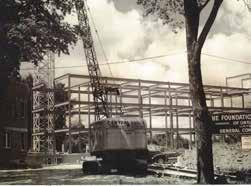











becoming a member. Membership cost $1, and membership was 42 ladies. Reorganization also brought a name change to “The Auxiliary to Tillsonburg Soldiers Memorial Hospital.”
Overcrowding was becoming common, often reaching the maximum of 53 patients in hospital at the same time. The board of directors made plans for the first major expansion, which will consist of the north and west wings, the powerhouse and laundry.
Supplementary Letters Patent changed the name of the trust from the Tillsonburg Soldier’s Memorial Hospital Trust to the Tillsonburg District Memorial Hospital Trust. The name of the hospital was also changed to remain consistent,

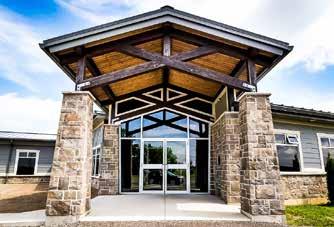
and to reflect that the hospital patients came from more than just the Town of Tillsonburg, and the armed services comprised more than just soldiers.
The hospital auxiliary raised enough funds to provide an operating room table to be used in the delivery room, followed shortly by an x-ray machine, representing their shift to fundraising significant enough to purchase major equipment for the hospital.
Two new wings are officially opened, increasing capacity to 105 beds and 27 bassinettes ready for the baby boomers. Construction costs approximately $859,600. Contributions from federal and provincial governments covered nearly half of the construction costs. The remainder was supported by county governments of Oxford, Elgin and Norfolk, townships, villages, service clubs, Women’s Auxiliary and the local community.
The first hospital auxiliary scholarship is awarded to Edith Powers. The scholarship is created to promote health care education.

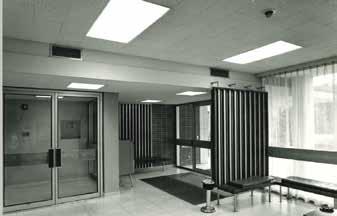
1964
Planning for another expansion begins. The hospital is experiencing overcrowding. In preparation for expansion, the oldest section of the hospital (formerly known as the Ferguson house) which contained the main entrance, offices, lobby and patient rooms, is demolished.

A contract is awarded for the addition of a South Wing and renovation to the north wing and construction begins. Contract price is $1,001,000.


1966
The newest portions of the hospital are completed and officially opened. New equipment is seen throughout the hospital, including in the boiler room and laundry. Total value of the new buildings and equipment was over $2,650,000. The hospital now holds 151 beds.
The hospital auxiliary opens the gift shop in the main lobby of the hospital.
1967
A new master plan is drawn up calling for orderly progression and expansion of the hospital and facilities over the next 12 to 15 years. The plan has four phases – 1) Ren-
Our sincere appreciation for each of the medical professionals in every department and clinic, administrative and clerical staff, maintenance, custodial and food services personnel, and all of the many volunteers –past and present – at Tillsonburg District Memorial Hospital.

Through these 100 years, each one of you are, and have been, a critical component in keeping our community hospital operating and growing. What you do and say, every day, makes all the difference to so many people.
We are very grateful for the dedication, work ethic, skills, tenacity, and compassion of every individual who has called TDMH their workplace.
ovation of the operating and delivery rooms; 2) extension of the south wing; 3) extension of the north and west wings; 4) upward extension of the south wing.
TDMH submits to its first accreditation survey and is awarded full accreditation by the Canadian Council of Hospital Accreditation (now called Accreditation Canada.)
TDMH also underwent an ‘Assessment Survey’ by a team under the aegis of the Ontario Medical Association and the Ontario Hospital Association, emerging with flying colours.
Phase one and two of the master plan are completed, and while the concepts of the plan are good, changing demands have required adaptation to the priorities.
Attention shifts to focus on a relatively new service – development of
an intensive coronary-cardiac care unit (ICCCU) is planned as a small addition within the existing footprint of the hospital.
TDMH receives full accreditation for the second time.
Ribbon cutting on the new ICCCU. The first patients came under care of that unit in October, which meant that medical and nursing personnel would spend the greater part of a year learning new techniques and procedures in support of the new unit; this continual training and education of staff will be ongoing as long as the hospital serves the district.
TDMH receives unannounced visit from the Ontario College of Physicians and Surgeons (CPSO) which highlighted the successes of the TDMH medical and hospital staffs.
After a year and a half of committee review, a formal submission was made to Ontario Hospital Service




Commission for approval to proceed with planning
Study of Ontario hospitals indicates TDMH is one of several hospital in dire need of expansion and renovation.
The first portable X-Ray machine is used at TDMH.
The first “crash cart” was put into use in the Emergency Department (ED) at TDMH. A crash cart is a self-contained, mobile unit that contains materials, drugs, and devices necessary to perform life support protocols to potentially save someone's life.
Minister of Provincial Parliament (MPP) Harry Parrott announces ministry approval to proceed to Phase 2 of expansion planning.
The first hospital Auxiliary “Extravaganza” event takes place in the main foyer of the Tillsonburg Community Centre. It was an all-day event with door prizes, dinner and a beer garden. Extravaganza was held yearly from 1976 until 2011, raising a total of $757,000 over the 37 years, with the support of nearly 300 volunteers each year. TDMH receives approval for the master plan and the functional plan, but receives the stipulation that no further progress can be at this time due to a lack of capital and operational funds.

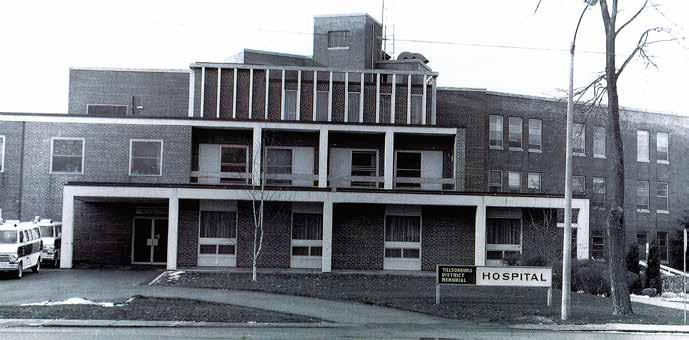
The Thames Valley Health Council makes advocating for the expansion of TDMH a number one priority.
Construction begins!
The “new” building, as you see it today, is officially opened, after construction costs of nearly $7.5 million - $300,000 of which was raised in the first four months of the campaign as the com-
munity portion. All directly connected municipal governments, as well as the federal and provincial governments, contributed.
The TDMH Foundation is incorporated as a charitable organization, tasked to raise funds for new and replacement equipment for TDMH as well as funds for other special projects within the hospital. The foundation acts as a “quiet fundraiser”, operating with minimal public announcement with a focus on targeted outreach, for the first 28 years, transferring $3,929,784 for capital requirements.

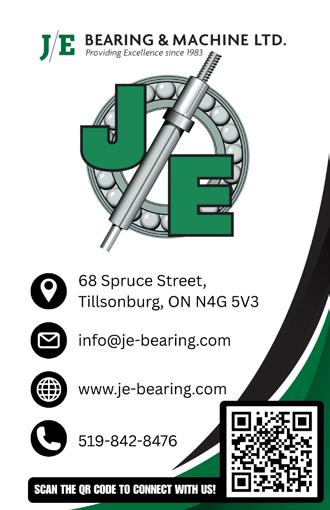

1983
TDMH opens an ultrasound room, used mostly for fetal ultrasounds.
1986
New technologies allow TDMH to complete laser surgeries, completely without sutures. These were mainly dermatological procedures at the time.
1989
Another three-year accreditation award is achieved by TDMH. At the time, only 15 per cent of hospitals in Canada would receive three-year accreditation status.
1992
In conjunction with a longstanding “sister city” relationship between Tillsonburg and Hengshui City, China, TDMH twins with Harrison International Peace Hospital in China in order to share knowledge between the two hospitals. The Harrison International Peace Hospital was named for Dr. Tillson Harri-

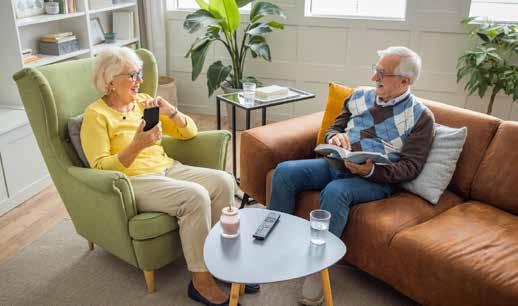
son, who was born in Tillsonburg, and was the great-grandson of George Tillson for whom the town is named. Dr. Tillson Harrison assisted in the United Nations Relief and Rehabilitation Administration in China, saving many lives in China during the revolution, and is widely honoured in China as a National Hero.
Mammography unit is officially opened at TDMH. $100,000 of the funds used to open the unit was raised by the hospital auxiliary.
Renovations to the hospital add six day-surgery beds, a pre-admit clinic and open ophthalmology and cataract surgery programs. Also, a portable ECG (electrocardiogram) machine could be seen in the hospital.
The hospital auxiliary opens the Coffee Corner, initially a cart in a corner of the Emergency Department.
Woodingford Lodge Tillsonburg receives goahead to locate long-term care beds on a portion of the hospital property, where it is still located today.
Breast Screening Clinic opens at TDMH. Through the Ontario Breast Screening Program, this service is available to anyone, without referral through a family doctor.
The hospital auxiliary officially becomes the Tillsonburg District Memorial Hospital Volunteer Association, a change that signals a shift of focus from general good deeds to volunteering across all areas within the hospital. Volunteers can be seen performing vital functions in nearly every area of the hospital.
The Tri-County Dialysis Committee, a community group, raises over $750,000 to build what will be named the Ed DeSutter Dialysis unit, before seeking approval from the Ministry of Health.
Renovations in the emergency department, patient registration and physiotherapy as well as the relocation of the Coffee Corner and gift shop to their current location at the corner of the main entrance lobby.
The installation of TDMH’s first CT scanner. At the time, the hospital was only funded for inpatient and emergency scans. Current funding allows scans for all patients.
The TDMH Foundation Board of Directors makes the decision to become active fundraisers
in support of TDMH, holding annual campaigns and fundraising events to entice new donors.
Re-development of the hospital with a new master plan is proposed and discussions are held with consultants and architects. TDMH did not receive ministry approvals to proceed.
Digital mammography comes to TDMH with $1,000,000 raised in four months, mainly through the TDMH Foundation’s active fundraising efforts.
Tom McHugh becomes first Integrated President and CEO as Alexandra Hospital, Ingersoll and TDMH enter into a shared services agreement that indicates the first steps toward integration.
TDMH receives the first shipment of Workstation on Wheels, or “WOWs”, that make accessing and updating patient records easier by clinical staff. A WOW is a portable, mobile computer cart designed to provide healthcare professionals with a flexible workspace for charting, accessing patient data, and using clinical applications. It allows for mobility, on-the-go charting, and often includes features like dictation support and infection control measures.
The implementation of HUGO, a technology used at Tillsonburg District Memorial Hospital (TDMH) to store patient records and provide a more streamlined experience for both patients and staff. This initiative aligns with the hospital's strategic goals, emphasizing technology to improve healthcare delivery. HUGO allows records to follow the patient, improving access and continuity of care.
TDMH implements a number of additional day programs, including the pain clinic, internists offices and CMHA services.
The TDMH Board of Directors enters into a Joint Board Agreement with Alexandra Hospital, Ingersoll Board of Directors as the two boards begin working more earnestly toward integration of the two hospitals.
A master plan submitted for redevelopment of the emergency department area with an approximate cost of $10 million did not receive traction from the ministry. No construction was done.
TDMH is proud to be one of the first hospitals in the region to implement Closed Loop Medication Administration (CLMA) in its Emergency Department. CLMA, a more secure way to administer medication to patients, increases security of “right patient, right medication, right dose, right
time, right route.”
2018
TDMH purchased the dental building across Rolph Street from the hospital for future development.


Ontario Health Teams (OHTs) were introduced as a way to improve healthcare coordination and collaboration across various settings. The goal is to create a more connected and patient-centered system by bringing together different healthcare providers and organizations.
The entire world enters the global pandemic caused by the COVID-19 virus. The Tillsonburg community shows immense support for the hospital and healthcare workers.
The Oxford OHT is officially formed with a goal to deliver a coordinated patient experience to the Oxford County community.
Total funds transferred to TDMH from the TDMH Foundation up to March 2020 is $10,242,168.
TDMH launches a specialty orthopaedic clinic and surgical program in partnership with London Health Sci-
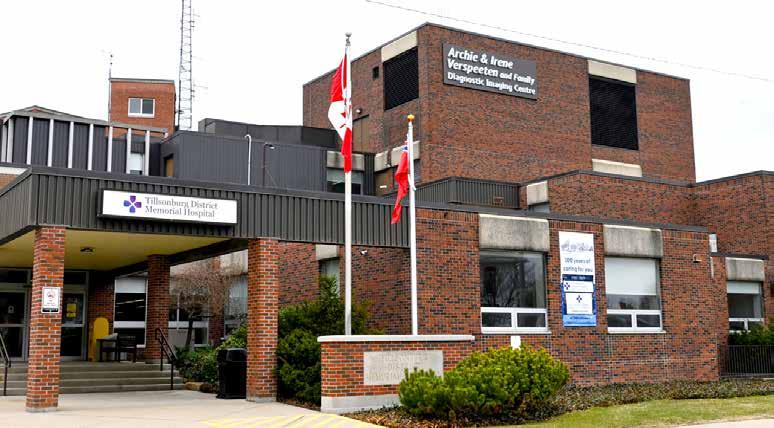
ence Centre’s Ortho-Trauma Team. The program focusses on acute extremity fracture management and orthopaedic surgical intervention to individuals in

our region.
2022
TDMH celebrated the milestone of performing the first same day joint hip replacement surgery. Implementation of this program provides residents of the communities we serve greater access to quality care closer to home.
Lessif Orthopedic Unit Matching Program raises over $1,000,000 in support of the TDMH Orthopaedic Clinic – 635 donors gave over 778 gifts to support the matching program.
TDMH celebrates the Archie & Irene Verspeeten and Family Diagnostic Imaging Centre, after a $1.8M donation from the Verspeeten family funds the replacement of the existing CT scanner with new “state-of-the-art” equipment, making Archie and Irene’s generous philanthropic gifts to TDMH exceed $3 million.
Within the electronic medical record system, Dragon Medical One implementation at TDMH significantly improves provider efficiency, allowing for faster and more accurate clinical documentation in a patient’s chart, leading to more timely documentation, enhanced patient care, and improved overall workflow across departments.
TDMH is the first hospital in Southwestern Ontario to use software in anesthesia that is a critical step in closing
the loop on surgical documentation, ensuring that all perioperative care is now captured electronically in one centralized system, enhancing patient safety by improving access to real-time information and reducing reliance on paper records and supporting better continuity of care.
Implementation of the Rapid Access Fast Track area within the ED, staffed by a trained nurse practitioner (NP). Patients presenting with low acuity, non-urgent conditions may be seen in the RAFT area by the NP, improving ED access and flow.
AHI and TDMH collaborate with Woodstock Hospital’s information technology team to create an electronic patient access and flow dashboard named eDash. The dashboard uses non-identifying patient information from the hospital’s electronic health record to show real time data about emergency and in-patient bed status. ED waiting rooms have been equipped with a patient specific dashboard highlighting information and updates about the hospital.
In December, the MOH gives approval for AHI and TDMH to integrate under a new integration name, Rural Roads Health Services, with each site maintaining its individual name. The proposed integration date is April 1, 2026.
2025
TDMH and the TDMH Volunteer Association celebrate 100 years of Caring for You!


H O M E S U P P O R T S E R V I C E S

Caring for you and your family with respect and dignity is our most important priority.
Assisted Living Housekeeping Meals on Wheels Transportation
MSC volunteers are a vital part of the services we offer, helping to deliver Meals on Wheels and provide essential transportation to those in need. If you ' re interested in making a meaningful impact in our community, apply online today!
CONTACT US VISIT US


JEFF HELSDON Editor
From the cart checking vitals in the emergency department to the CT scanner, there is no doubt the equipment in Tillsonburg District Memorial Hospital (TDMH) is leading edge. But there is one thing all this equipment, even down to hospital beds, has in common: the provincial government doesn’t pay for it.
With health care and hospitals being primarily a provincial government responsibility, many people wrongly assume that money from the province pays for new equipment. This is not so, and has not been the case for decades. Money for all hospital equipment must be raised in the community. Raising these funds is the vital role that the TDMH Foundation plays.
“The government pays for the operation of the hospital, but not the equipment,” said Gerry Dearing, Executive Director of the TDMH Foundation, “The community must fundraise for equipment in the hospital.”
A new CT scanner, thanks to the Verspeeten family, is the largest of the recent community support donations. Some of the other recent ini-

tiatives the foundation was behind include raising $1 million to get the Orthopedic Surgery Program off the ground, and purchasing an endo -

scope, stretchers and other diagnostic equipment.
For 2024, the foundation transferred $1.8 million to the hospital for equipment purchases.
In concert with the hospital’s 100th anniversary, the foundation is launching its 100 for 100 Equipment Campaign called The 100 Club Membership. The campaign is seeking, at least, one donor at $100,000, 10 donors at $10,000, 100 donors at $1,000 and 1,000 donors at $100. All donors will be displayed on a donor wall in the hospital main lobby under the appropriate giving level. This is a first for a campaign of this type.
“We’ve not had a membership club like this before,” Dearing said. “We think it fits in with the 100th Anniversary and people who want to donate will part of this 100th Club.”
The campaign, which will run all year, is to raise money towards the purchase of new hospital beds and capital equipment. The intention is to replace all the beds in the hospital (over multiple years) and with a single bed being $17,000 and a specialized ICU bed coming in at $52,000, this will be a large feat. There are also some smaller high priority pur-
chases planned for the year: an operating room table, vital signs tower, pain pumps, gastroscope, radiology monitor and a syringe pump for pediatric use.
Outside of the 100 Club, which is unique to this year, the foundation has two direct mail campaigns per year in association with the mail-out hospital/foundation Community Report.
The fourth annual Taste of Summer is planned for May 31, from noon to 8 p.m. This event involves food trucks and family activities, such as a petting zoo, dog shows, children’s shows, a vendor village, beer tent and local entertainment. Entrance is by a donation to the foundation.
Taste of Summer usually draws several thousand people and raised more than $40,000 for the foundation last year.
The annual golf tournament, planned for Friday, Sept. 12 this year at the Bridges of Tillsonburg, is the other large fundraiser. It includes a day of golf, dinner and a live auction. It raised $52,000 last year.
“The course is usually a sellout plus we have extras that come for dinner,” Dearing said.












To help celebrate TDMH 100th Anniversary, TDMH Foundation has launched a capital equipment fundraising initiative on top of our Annual Equipment Campaign.
The hospital needs new patient beds and plans on purchasing eight beds at a cost of $136,000 in 2025. This is the first phase of a multi- year initiative to replace all beds in the hospital. Every year the Foundation works with the hospital to help fund the required highest priority needs of Capital Equipment. To help add new technology to improve care, as the government does not fund capital equipment, the Foundation is asking for continued support and cannot do it without generous gifts from the public.
Below is a list of some of the equipment required for 2025.
Glidescope
A Glidescope is an instrument that is used to support clinician’s view of a patient’s airway in emergency situations. The Glidescope can help with intubation procedures, viewing vocal cords, and support patients who may have anatomical or traumatic injuries in which visualization of the airway is difficult. At $30,256 each, one is required.

Vital sign monitors are a tool used that is used daily by the health care team to provide information about the physiological condition of the patient. The vital sign machine measures: blood pressure, temperature, pulse and oxygen levels. Knowing these important measurements helps to inform care and the treatment plan. At $3,313 each, two are required.
A pain pump or infusion pump infuses small amounts of medications into the patient’s circulatory system. Pain pumps may be used after certain surgeries to help control a patient’s pain. Two are required at $5,569 each.
Therapeutic Gastroscope
A gastroscopy is a test to check inside patient’s throat, esophagus and stomach. The scope is an important diagnostic tool to check what may be causing digestive problems such as difficulty swallowing, ingestion or heartburn. The gastroscope is a thin,
flexible tubed tool with a light and camera on the end. One is needed at a cost of $32,272.
Ceiling lifts are a motorized device that lifts and transfers a patient along an overhead track mounted to the ceiling. The ceiling lift involves the use of a sling for the patient to be safely transferred one place to another such as from the bed to chair. Four are required at $ 13,084 each.
Syringe Pump for emergent pediatric use
A pediatric syringe pump is used to ensure there is high accuracy and precision in medication delivery in children. The syringe pump supports precise control over the medication delivery ensuring safe patient care. One is needed at a cost of $4,235.
A radiology monitor is used by radiologists to view diagnostic images such as X-rays, CT scans and more. Radiology monitors are an important tool to help radiologists make accurate diagnosis. One is required at a $30,048 cost.
Operating Room Table
The purpose of a surgical table is to provide a stable and secure platform for patients while the surgical team operates. The table can be moved in various positions to support an optimal approach and positioning of the patient’s anatomical surgical site for easier access for surgery. Two are needed at $57,672 each..
Bed Replacement Program - HillRom Centrella Max beds
These are the preferred beds for acutely ill, medical/surgical inpatients. The beds have integrated features for fall prevention and early mobility support with bed exit alerts, clear visual indications of potential patient fall risks and verbal safety prompts; pressure injury prevention through therapeutic surfaces and positioning support to prevent sliding and simplify turns;advanced air mattress systems support skin therapy reducing pressure ulcer risks and patient monitoring features to help detect signs of patient deterioration, with contact-free, continuous heart and respiratory rate monitoring. Eight beds are needed at $17,000 each.
A large part of the golf tournament, and many foundation events, is support from the business community. This can be hole and golf cart sponsors at the golf tournament, petting zoo sponsors, and a wide variety of event sponsorship opportunities.
“If it wasn’t for our community partners, we wouldn’t be able to do our events,” Dearing said. “Our event donors support events and help with our events.”
The foundation’s revenue is rounded out by estate gifts and memorial giving in memory of a friend or loved one
usually at funerals.
“We have a great community, a very generous community,” Dearing said. TDMH Foundation was formed 43 years ago, and was registered as a charity on Dec. 24, 1982.
Dearing was with the Sunshine Foundation in London as director of development before starting as the first full-time Foundation employee. He and his wife have moved to Tillsonburg to become part of the community, including him joining the Kinsmen Club and Chamber of Commerce. Assisting Dearing with the
foundation is part-time Development Assistant Lindsay Tribble, whose father David was one of the foundation founders.
When this year’s campaign winds up, a new year of planning will start for new priority equipment next year.
“It never ends,” Dearing said. “There’s always a need for new and improved, better technology to enhance and provide better care. The more the community supports us, the more we can support the hospital with new and better equipment and improve patient care.”


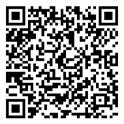
























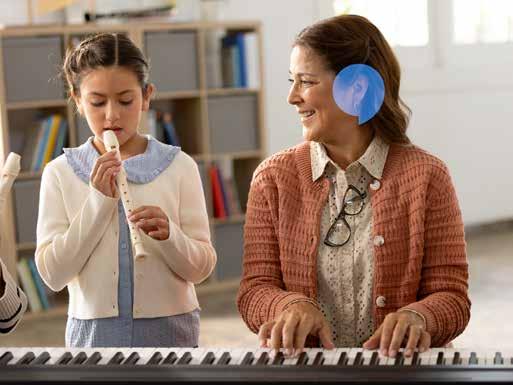

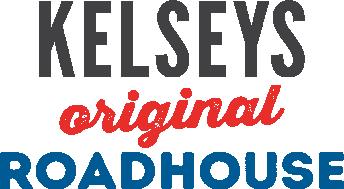



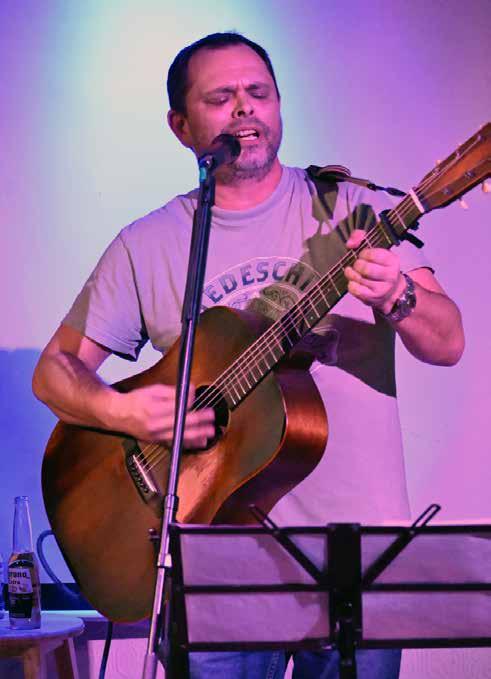
JOAN WESTON Contributor
John Smith, a prominent Tillsonburg citizen, was the man responsible for Tillsonburg’s first public hospital, which began operation 100 years ago.
John Smith was born on November 15, 1843 in Walton, England and educated in the English public schools. He emigrated to Canada in 1868 and settled in Tillsonburg in 1870. Soon after his arrival, he established a planing mill and a sawmill. After several years he became a contractor as well, building the town hall; the first Tillsonburg High School at a cost of $6,500; plus many houses. Many of these homes were on Rolph Street. Smith also was successful in his lumbering operations.
After amassing considerable wealth, Smith devoted himself to public activities and was an active member of St. John’s Church. He served on town council for about 10 years, and was mayor in 1886.
On January 15, 1886 John Smith married the widow Jennie (Jane) Burn, a milliner, who was my great-great-grandmother. The couple resided in the residence on the south-west corner of Washington Grand Ave. and Rolph Street, which Smith had built in 1884.
A “Tillsonburg Observer”, October 31, 1884 article stated: “The fine house recently
erected on Rolph Street by Mr. John Smith is well worth a visit of inspection if only to see the grand manner in which it is painted. The outside coloring is unique in Tillsonburg, though we believe it is the very latest agony in the United States. The body is a dark and rich olive green, and the edging and window sashes Venetian red. The very best and costliest English colors were used….” The couple enjoyed 29 years of marriage, then Great-GreatGrandma (Burn) Smith passed away in 1915.
On September 24, 1917 John Smith married her sister, my Great-Great-Great Aunt, Louise Dimmock.
Smith died on October 21, 1921. He had been concerned about the lack of a public hospital to serve Tillsonburg residents and those of the surrounding region. In his will, he bequeathed $100,000 and the proceeds from the sale of his house, if necessary, to the town to establish a public hospital to be named “Soldiers’ Memorial Hospital”. Town council gratefully accepted this gift, and in 1924 sold John Smith’s house in order to purchase the land where the current hospital stands. It took until March of 1925 before the Soldiers’ Memorial Hospital was completed and officially opened.
Due to the foresight and legacy of John Smith, Tillsonburg has been blessed with a public hospital for 100 years.


LISA DAHM Contributor
Despite being founded in 1825, and incorporated in 1872, Tillsonburg was without a hospital until 1903, when Dr. W.H. Bennett formed the “Emergency Hospital.” Until the early 1900s hospitals were avoided, as they were generally seen as only treating the poor who suffered from infectious diseases and conditions caused by lack of nutrition. Patients who could afford treatment at home preferred to stay there and avoid the hospitals.
The Emergency Hospital treated the sick and injured but was not a hospital in the sense that we know it today. A flyer for the Emergency Hospital notes “Surgical Work, Confinement Cases and Accidents” as the hospital’s purpose, with a “resident medical man always in charge”, and “thoroughly trained and competent nurses.”
Despite that, seriously injured and chronically ill patients were required to attend hospitals elsewhere, including Victoria Hospital in London which opened in 1899.
People who went to the hospital were expect-


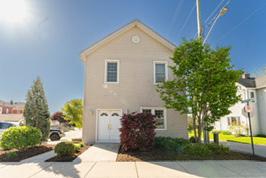


ed to pay for the service, though fees were very small despite hospital operating costs not yet being supported by the government as they are today.
The Emergency Hospital building still stands today on Ridout Street directly behind the Bank of Montreal, though renovation has made it nearly unrecognizable. It was the long-time office of Doctors Alexander and McLeod before being renovated for the Tillsonburg Medical Clinic, and later, for other purposes.
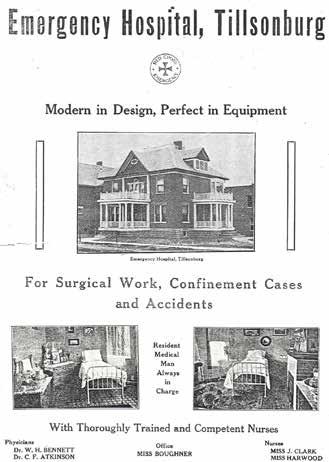




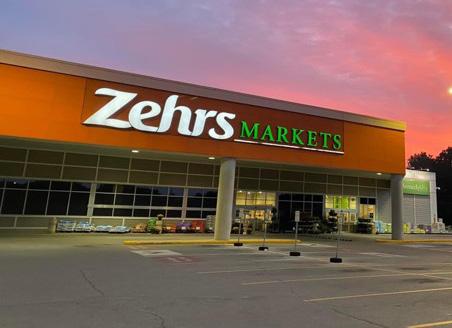

LISA DAHM Contributor
Tillsonburg District Memorial Hospital is lucky to have a dedicated Volunteer Association celebrating 100 years along with TDMH.
One particular group of volunteers are the members of the Patient and Family Advisory Committee (PFAC). Called patient advisors, PFAC members represent patients and their family members by sharing their ideas, experiences and points of view with health care professionals in a collaborative partnership to help inform hospital work.
Patient advisors have the opportunity to speak on behalf of patients and their family members, giving them a “voice” in the patient centred care process, working in partnership with health care professionals to identify patient needs and make suggestions for improvements where possible.
Volunteer PFAC members meet with health care professionals on a monthly basis to support service and system planning intended to improve the hospital experience. They participate on hospital committees and working groups, and provide input on correspondence and procedures from a patient’s point of view.
PFAC has been integral to a number of recent and ongoing projects implemented to improve the quality of patient care at TDMH, including taking part in the revision of TDMH’s new hire orientation process and attending orientation to share patient stories with the new hires to the hospital. Patient advisors have also been participating in leadership recruitment processes in order to advocate for effective patient relations even before a leader joins the team.
Patient advisors have also been involved in wayfinding review, and in project engagement/partnership for large scale projects like the Emergency Department (ED) optimization project and the CT scanner replacement project. One of the most impactful projects that PFAC has taken on recently involved the revision of patient experience surveys, helping TDMH gather valuable
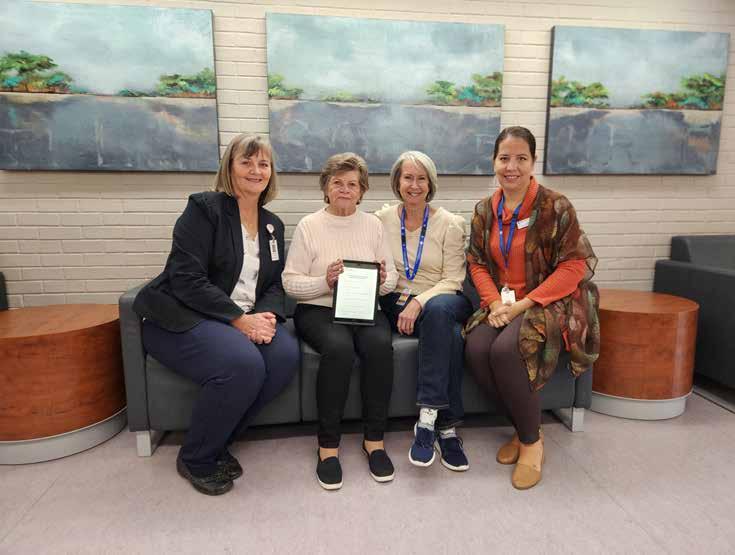
feedback from patients and family members. With the support of our patient advisors, patient experience surveys are also now translated into five languages (in addition to English): French, Punjabi, Low German, Dutch, and Spanish.
Patient Experience Rounding is another new process implemented by PFAC where patient advisors are able to connect with patients ‘in the moment’ of their care experience to provide feedback and assist the team in making real-time improvements to patient care. This has not only improved survey response rates, but helped TDMH implement timely improvements based on those survey results. The program was recently presented as peer learning session at a Health Quality Ontario (HQO) meeting because of its success.
While no special qualifications are required, our patient advisors bring a wealth of experience and knowledge to the table, as well as
huge amounts of compassion and dedication to our patients and their families. This small but mighty group affects real change within their sphere of influence. TDMH is grateful for everything each and every one of them put toward their volunteer roles with us.
The patient advisor team at TDMH are always looking to welcome new members to PFAC. Former patients and their family members are encouraged to apply to share their passion and dedication to improving the quality of patient care.


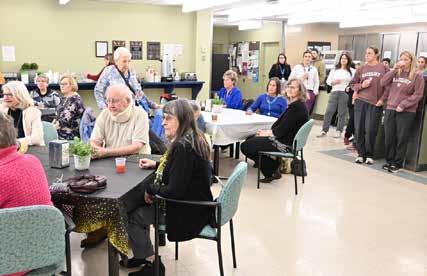

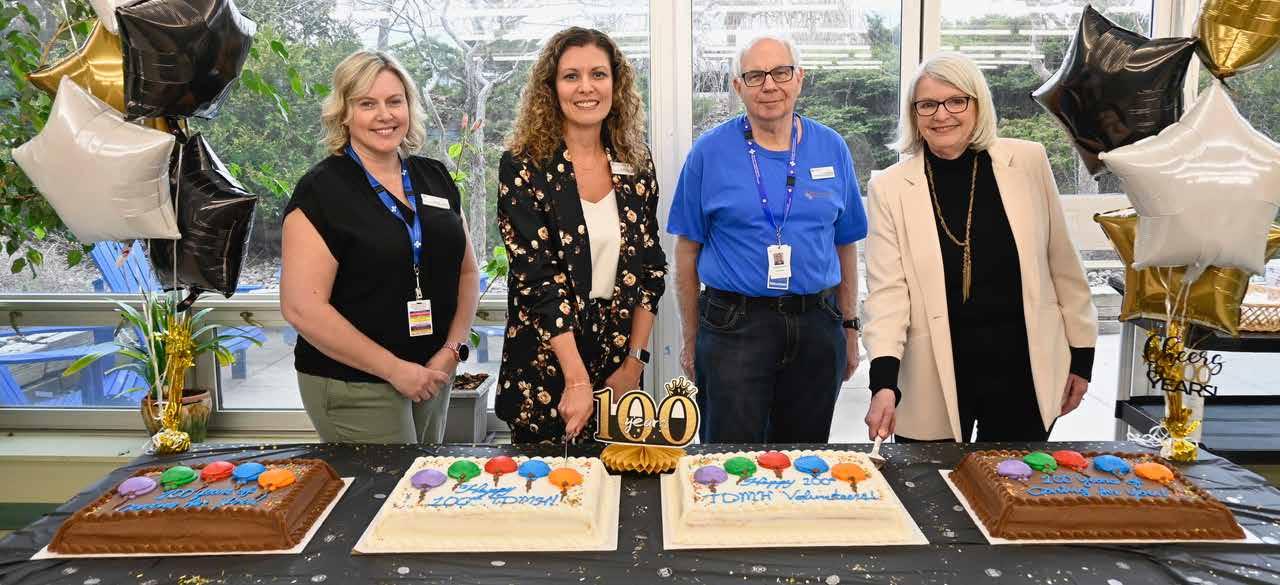

(CONTRIBUTED PHOTO)
The Lessif Orthopaedic Unit was possible through $500,000 raised from the community which was matched by John and Liz Lessif, left. The Lessif's donation demonstrated their immense care and commitment to the hospital. TDMH Chief of Staff, and orthopaedic surgeon, Dr. Clayton Inculet is pictured with the Lessifs.











The hospital Extravaganza started small in 1976 in the main foyer of the Tillsonburg Community Centre, and was a combination of a yard sale, door prizes, dinner and a beer garden. The event moved to the former tobacco auction exchange after the town purchased it. Between 1976 and 2011, the Extravaganza raised $757,000 for the hospital.


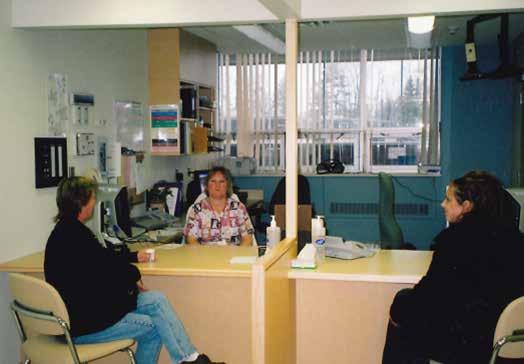




JEFF HELSDON Editor
In more than 40 years as a doctor in Tillsonburg, Dr. Dick Dalby has witnessed the hospital grow with the town.
A Tillsonburg native, he went to Rolph Street School and Annandale before attending the University of Western Ontario for medicine. Outside of a one-year internship in Hamilton, his entire career has been spent in Tillsonburg.
Dalby started at the Tillsonburg Medical Centre with Dr. Howard Alexander and Dr. McLeod in 1964 on Ridout Street. Ironically, the building where the practice was based was the original Tillsonburg Emergency Hospital. The latter left shortly after Dalby start for a time.
Dalby’s earliest recollections of the hospital date back before he started as a doctor as he grew up down the street.
“There used to be a nurse’s education dormitory on the front side. That was before my time (as a doctor),” he said. “Then we got a temporary Intensive Care Unit that was built on the south side. It was a four-bed intensive care unit.”
That temporary unit was removed when the ICU was built on the second floor where it is today.
TDMH didn’t used to have a dedicated surgeon. To the best of Dalby’s recollection, Dr. Elmer Quintyn, who was from Lynedoch, came about a year before he did. A second surgeon was added when
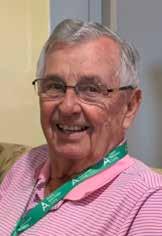
of tonsils in Tillsonburg,” Dalby said.
In the early days, Dalby and Dr. Vince VanHooydonk were the anesthetists at TDMH. Dalby spent a lot of time in the operating room during his internship in Hamilton, and became an anesthetist that way, as did VanHooydonk.
“You can’t do that today,” he said.
tyn and Ort retired as the newer surgeons weren’t as comfortable doing cesarean sections, which is vital for an obstetrics department.
“If you had somebody in labour and need a cesarean section you need that fairly quickly,” Dalby said.
Combined with funding challenges, and a concern from medical staff about the inability to perform Cesarean sections, a decision was made to stop delivering babies in Tillsonburg.
Dalby was also chief of staff at the hospital for 20plus years.
His daughter, Dr. Lisa Dalby, said he did that job without receiving an additional salary.
“He did not take the money because he wanted the money to go to the hospital,” she said, adding he felt responsible for Tillsonburg having a top-rate facility and wanted the








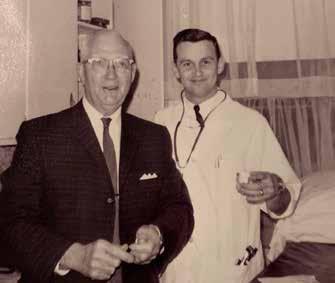
money invested in equipment.
Dalby’s lobbying helped to see TDMH get a CT scanner.
“It took about 10 years to get it, and a lot of talking and fighting,” he recounted.
As chief of staff, he was also change of recruitment of doctors and medical staff. Over the years, he convinced many doctors, surgeons and internist Dr. Paul Liwanpo to locate in Tillsonburg. Another
part of the job was working with hospital management on the budget. Dalby spoke highly of working with former president and CEO Jim Spencer and treasurer Neil Tull.
“They were a good team and I worked closely with them on what we could spend,” he said.
Today, although he is retired, Dalby sees even more technological advancements at TDMH and believes this is a good thing.


